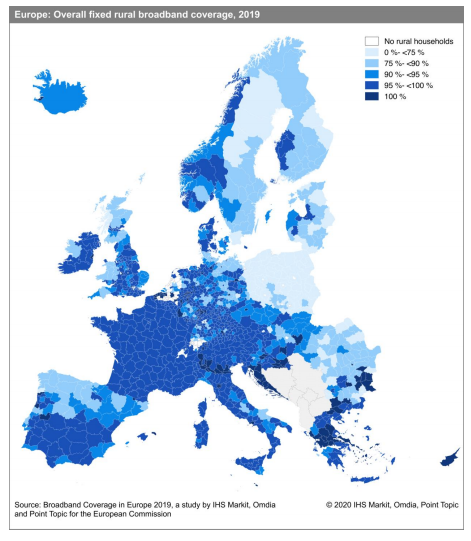The European Commission recently published its annual Report on Broadband Coverage in Europe (EU 28, Switzerland, Norway and Iceland). The publication shows that progress has been made since 2018 in terms of Internet access in rural areas, especially on high speed connection. 89.7% of rural households had access to broadband in 2019, compared to 87.4% in the previous year. While there is therefore little progress in the overall Internet access in rural Europe, the percentage of rural households with access to very high-speed Internet has risen from 51.7% to 59.3%.
Despite these progresses, broadband access remains very critical in some countries, like Poland and Romania, or regions such as in the north of Spain, Scottish Highlands and the middle-north regions of Sweden.
Earlier this year, the European Broadband Competence Office (BCO) published a handbook on rural broadband, as part of the European Commission’s Action Plan on Rural Broadband. Targeting both promoters and policy makers, it presents solutions to improve broadband coverage in rural areas, introduces available investments and European funding opportunities, and showcases various good practices.
Euromontana calls for more effective measures to extend broadband coverage in rural and mountainous areas, including those that are remote or sparsely populated. A good Internet access is crucial for local economic development, rural businesses, education, and remote work among others, and is part of the quality of life. Policymakers and promoters thus need to consider the needs of these regions and develop innovative solutions to guarantee access to digital technology.
For more details and inspiration on broadband coverage in rural Europe, please refer to the 2019 report and to the European Commission’s webpage on projects about broadband.











